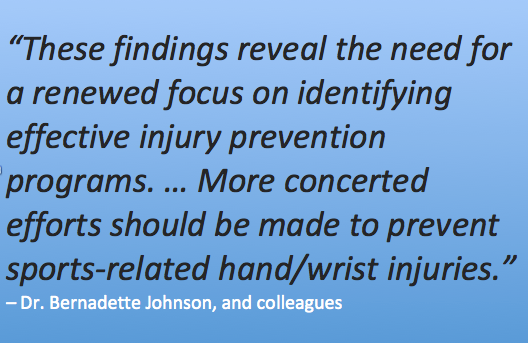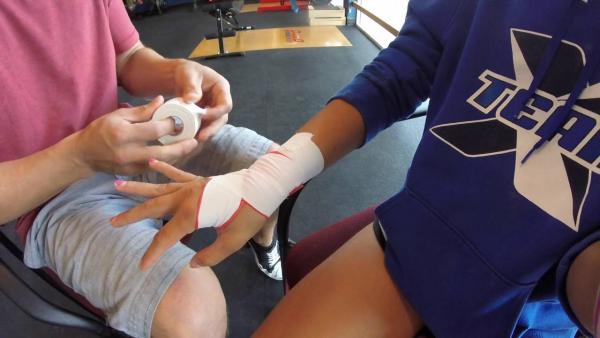When young athletes are injured playing high school sports, frequently the areas affected are the hands or wrists. Nearly 1 in 10 injuries fall into that category, with 45 percent of those resulting in fractures. That's one noteworthy finding of a new national study.
The undertaking is based on 11 years of data compiled by the National High School Sports-Related Injury Surveillance Study, covering the school years 2005-06 to 2015-16. It was conducted by Dr. Bernadette Johnson of Children’s Hospital Colorado, and other researchers, and published this week in the journal Pediatrics.
“Stick and ball or puck sports and full contact sports have high rates of hand/wrist injuries relative to other sports," they wrote in their paper, "which is indicative of a need for sport-specific prevention efforts.”
The sport that produced the highest number of wrist and hand injuries was football, by a large margin, while boys’ lacrosse, girls’ softball, wrestling, girls’ field hockey, boys’ ice hockey and girls’ basketball, respectively, figured prominently.
 Researchers had access to data related to more than 40 million "athlete exposures," or AE's, when athletes were in action. "During games or practices, there were 6,723 hand/wrist injuries, for an overall rate of 1.7 injuries per 10,000 AEs," notes Reuters. "About half of the injuries occurred during competition and half during practice, but because players spend more time practicing than competing, injury rates were actually three times higher during games."
Researchers had access to data related to more than 40 million "athlete exposures," or AE's, when athletes were in action. "During games or practices, there were 6,723 hand/wrist injuries, for an overall rate of 1.7 injuries per 10,000 AEs," notes Reuters. "About half of the injuries occurred during competition and half during practice, but because players spend more time practicing than competing, injury rates were actually three times higher during games."
When wrists were injured, fractures were four times more likely to occur than contusions, and five times more likely than ligament sprains. Roughly 8 percent of these injuries, according to the study, required surgery.
In addition to the costs involved with treatment and recuperation, one primary concern with these type of injuries is that they can hamper teenagers' ability to complete their school work.
“Given the prevalence of hand/wrist injuries in this population," the authors wrote, "as well as the potential negative effects of these injuries, including time loss from play, financial costs, and academic challenges, more concerted efforts should be made to prevent sports-related hand/wrist injuries.”




